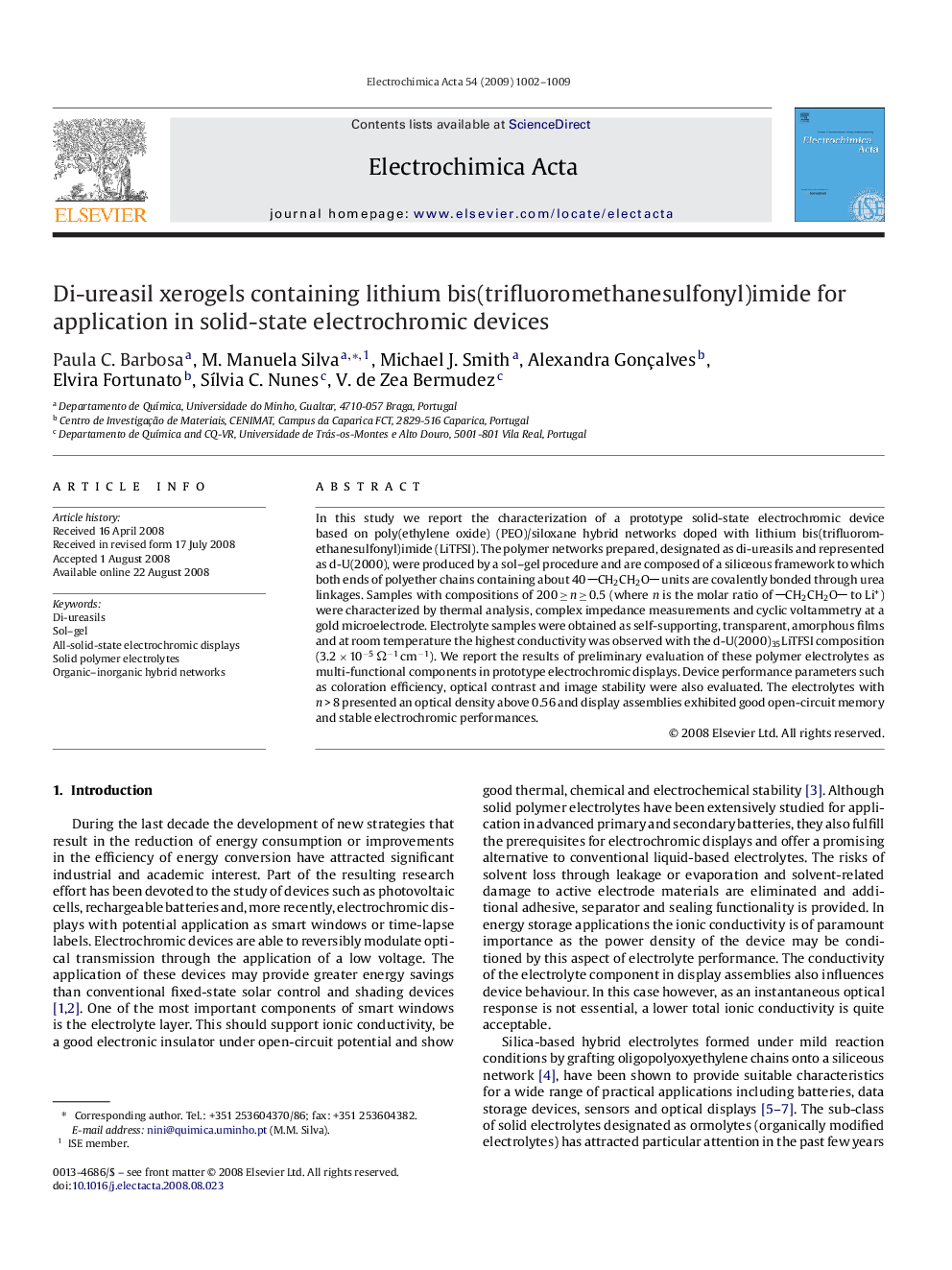| Article ID | Journal | Published Year | Pages | File Type |
|---|---|---|---|---|
| 193927 | Electrochimica Acta | 2009 | 8 Pages |
In this study we report the characterization of a prototype solid-state electrochromic device based on poly(ethylene oxide) (PEO)/siloxane hybrid networks doped with lithium bis(trifluoromethanesulfonyl)imide (LiTFSI). The polymer networks prepared, designated as di-ureasils and represented as d-U(2000), were produced by a sol–gel procedure and are composed of a siliceous framework to which both ends of polyether chains containing about 40 CH2CH2O units are covalently bonded through urea linkages. Samples with compositions of 200 ≥ n ≥ 0.5 (where n is the molar ratio of CH2CH2O to Li+) were characterized by thermal analysis, complex impedance measurements and cyclic voltammetry at a gold microelectrode. Electrolyte samples were obtained as self-supporting, transparent, amorphous films and at room temperature the highest conductivity was observed with the d-U(2000)35LiTFSI composition (3.2 × 10−5 Ω−1 cm−1). We report the results of preliminary evaluation of these polymer electrolytes as multi-functional components in prototype electrochromic displays. Device performance parameters such as coloration efficiency, optical contrast and image stability were also evaluated. The electrolytes with n > 8 presented an optical density above 0.56 and display assemblies exhibited good open-circuit memory and stable electrochromic performances.
